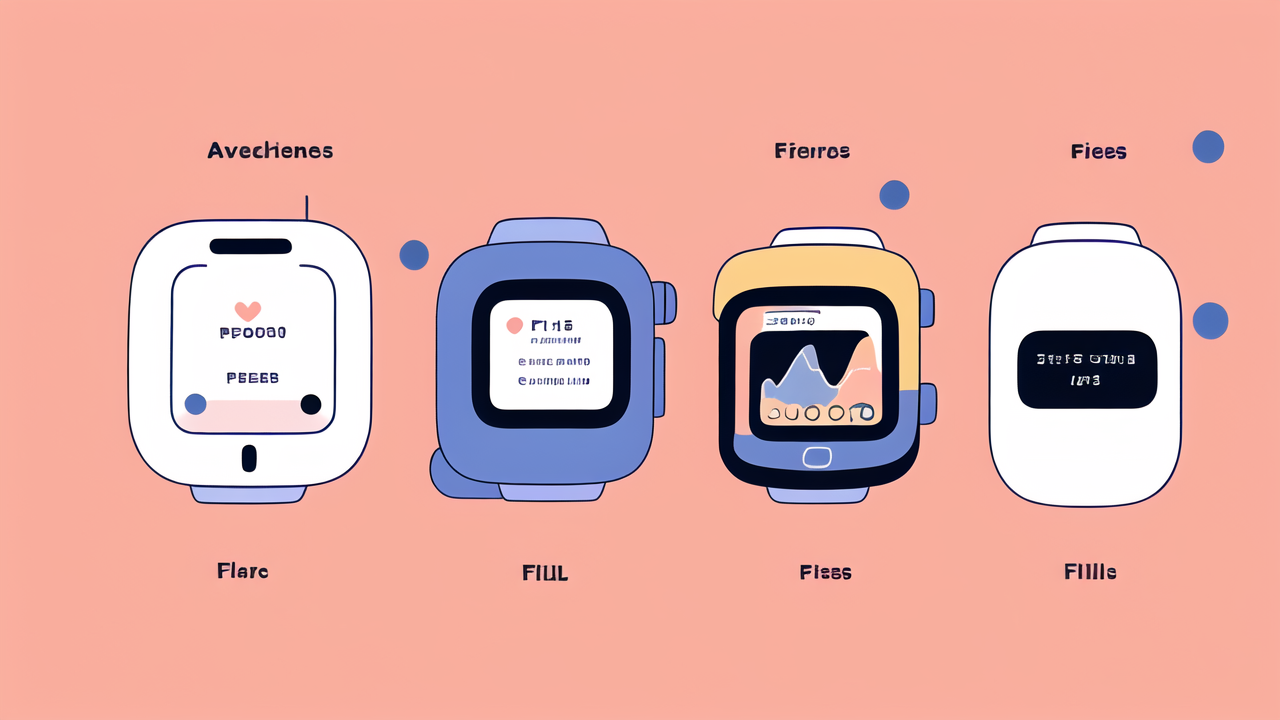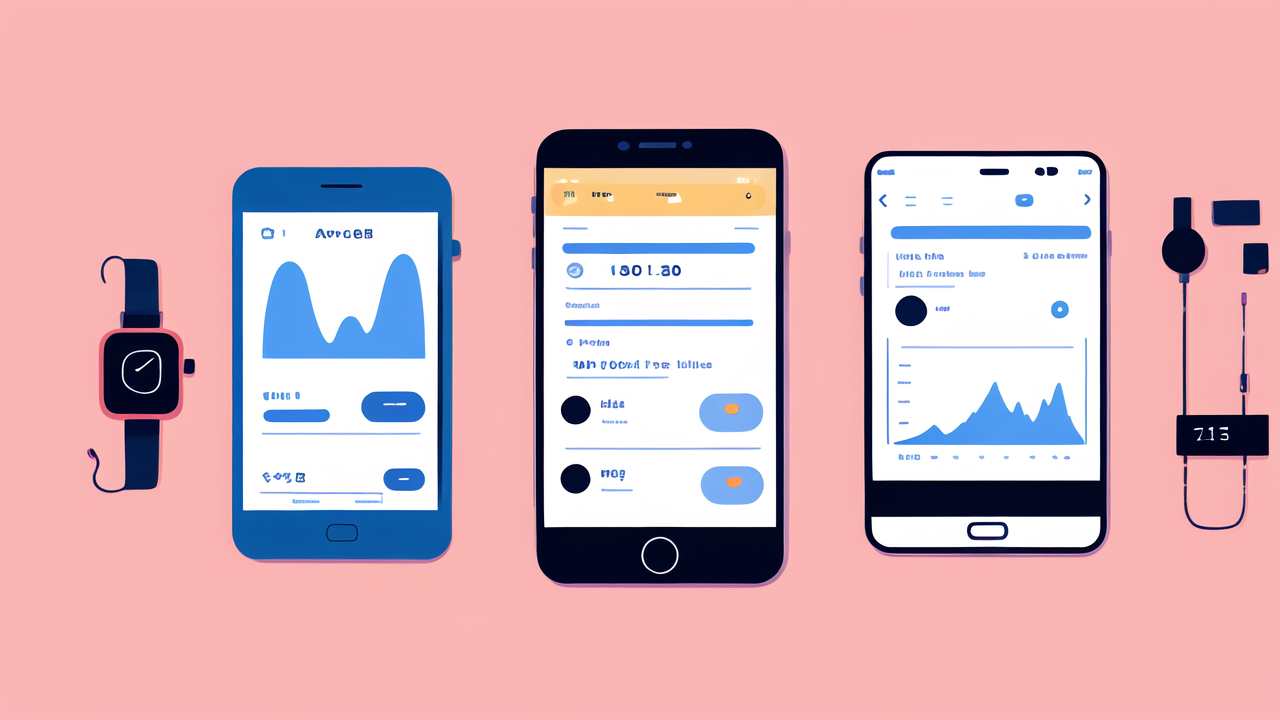The Evolution of Wearable Fitness Technology
A Brief History of Wearable Fitness Devices
Wearable fitness devices have come a long way since their inception. The journey began with simple pedometers in the 1960s. These basic step counters paved the way for more advanced tech. In the 1980s, heart rate monitors gained popularity among athletes. The 2000s saw the rise of GPS-enabled devices for runners and cyclists.

The real boom came in the 2010s with the introduction of smart fitness trackers. Brands like Fitbit and Jawbone led the charge. These devices could track steps, sleep, and calories burned. They synced with smartphones, making data easily accessible. This era marked the beginning of the quantified self movement.
As technology advanced, so did the capabilities of these devices. Today's wearables offer a wide range of features. From stress monitoring to blood oxygen levels, they've become mini health labs on our wrists.
Milestones in Wearable Technology Development
Several key milestones have shaped the wearable tech landscape. The launch of the Apple Watch in 2015 was a game-changer. It brought smartwatches into the mainstream. The device combined fitness tracking with smartphone features. This set a new standard for wearable tech.
Another significant milestone was the development of more accurate sensors. Heart rate monitoring moved from chest straps to wrist-based devices. This made tracking more convenient for users. The introduction of ECG features in smartwatches was also groundbreaking. It brought medical-grade monitoring to consumer devices.
Advancements in battery life have been crucial. Early fitness trackers needed frequent charging. Now, many devices can last a week or more on a single charge. This has made wearables more practical for everyday use.
How Fila Smart Fits into the Current Wearable Tech Landscape
Fila Smart has entered a competitive market with its line of fitness wearables. The brand leverages its reputation in sports apparel to appeal to fitness enthusiasts. Fila Smart devices offer standard features like step counting and heart rate monitoring. They also include sleep tracking and smartphone notifications.
What sets Fila Smart apart is its focus on affordability and simplicity. The devices cater to users who want basic fitness tracking without complex features. This approach fills a gap in the market between high-end smartwatches and basic fitness bands.
Fila Smart also emphasizes style in its designs. The devices blend fashion with function, appealing to style-conscious consumers. This aligns well with Fila's brand image in the sportswear industry.
Analyzing Fila Smart's Position in the US Market
Market Trends and Consumer Preferences for Fitness Wearables
The US market for fitness wearables continues to grow rapidly. Consumers are increasingly health-conscious and tech-savvy. They seek devices that can help them monitor and improve their well-being. Key trends include a demand for more accurate health metrics and longer battery life.

Customization is becoming more important to users. They want devices that can be tailored to their specific fitness goals. Integration with other health apps and services is also highly valued. Consumers expect their wearables to work seamlessly with their smartphones and other devices.
Privacy and data security are growing concerns. Users want control over their health data and assurance that it's protected. There's also a trend towards more discreet wearables. Some consumers prefer devices that don't look obviously like fitness trackers.
Comparing Fila Smart to Competitors in the Wearable Fitness Space
Fila Smart faces stiff competition in the wearable fitness market. Giants like Apple, Fitbit, and Garmin dominate the high-end space. These brands offer advanced features and seamless ecosystems. They cater to tech-savvy users and serious athletes.
In the mid-range market, brands like Xiaomi and Huawei offer strong competition. These companies provide feature-rich devices at competitive prices. They appeal to budget-conscious consumers who still want advanced tracking capabilities.
Fila Smart positions itself as a more affordable option with essential features. It competes with brands like Amazfit and Letsfit in this segment. Fila's advantage lies in its brand recognition and fashion-forward designs.
The Unique Selling Propositions of Fila Smart
Fila Smart's main selling points are affordability, simplicity, and style. The devices offer basic fitness tracking at a lower price point than many competitors. This makes them accessible to a wider range of consumers.
The brand's focus on user-friendly interfaces appeals to those new to fitness tracking. Fila Smart devices are designed to be easy to set up and use. This reduces the barrier to entry for less tech-savvy users.
Fila's heritage in sportswear gives its wearables a fashion edge. The devices are designed to look good both in and out of the gym. This dual functionality as a fitness tool and fashion accessory sets Fila Smart apart.
Future Outlook for Fila Smart and Wearable Fitness Technology
Innovations on the Horizon for Wearable Fitness Devices
The future of wearable fitness technology is exciting and full of potential. One major trend is the integration of AI and machine learning. These technologies will enable more personalized health insights and recommendations. Wearables may soon be able to predict health issues before they become serious.

Non-invasive glucose monitoring is a highly anticipated innovation. This could be life-changing for diabetics and others monitoring blood sugar. Several companies are working on this technology for smartwatches.
Improved sensors will allow for more accurate and diverse health metrics. We may see wearables that can monitor blood pressure, hydration levels, and even stress hormones. The goal is to create a more comprehensive picture of the user's health.
How Fila Smart Can Adapt to Changing Consumer Expectations
To stay competitive, Fila Smart will need to evolve with consumer demands. Improving battery life should be a priority. Longer-lasting devices will appeal to users who don't want to charge frequently. Enhancing water resistance and durability could also attract more active users.
Fila Smart could explore partnerships with health and fitness apps. This would expand the ecosystem and add value for users. Offering more personalized insights based on collected data could also set them apart.
Maintaining a balance between new features and simplicity will be crucial. Fila Smart should focus on adding meaningful functionality without overwhelming users. This could include smart coaching features or stress management tools.
Potential Regulatory Challenges and Opportunities in the Wearable Tech Sector
As wearables collect more health data, regulatory scrutiny is likely to increase. Privacy laws like GDPR in Europe and CCPA in California already impact data handling. Companies will need to ensure robust data protection and transparent privacy policies.
There may be opportunities for wearables to gain medical device certifications. This could open up new markets and applications in healthcare settings. However, it would also bring stricter regulatory requirements.
Standardization of health metrics across devices could become a focus. This would allow for better data interoperability and comparison. It could also lead to more collaboration between wearable tech companies and healthcare providers.
In conclusion, the wearable fitness technology sector is dynamic and evolving. Fila Smart has carved out a niche with its affordable, user-friendly devices. To thrive, it must continue to innovate while staying true to its core values. The future of wearables promises exciting advancements in personal health monitoring and management.




Leave a comment
This site is protected by hCaptcha and the hCaptcha Privacy Policy and Terms of Service apply.